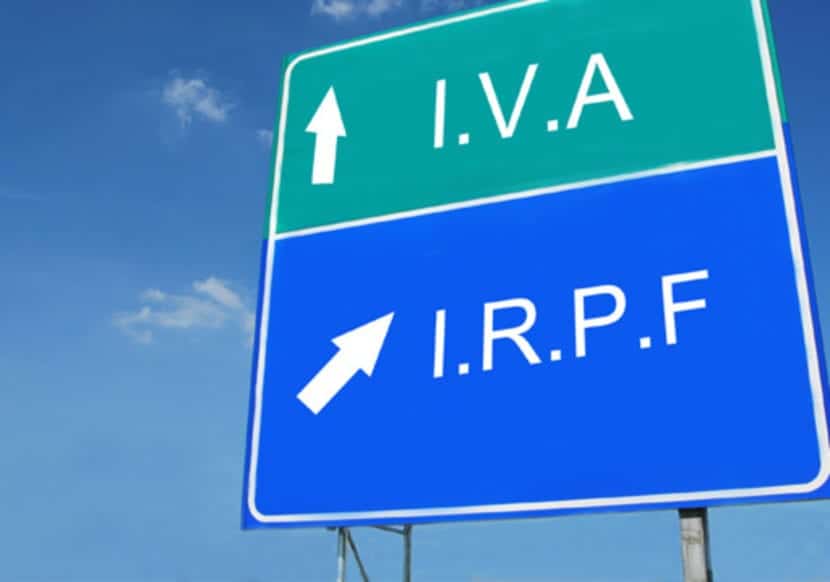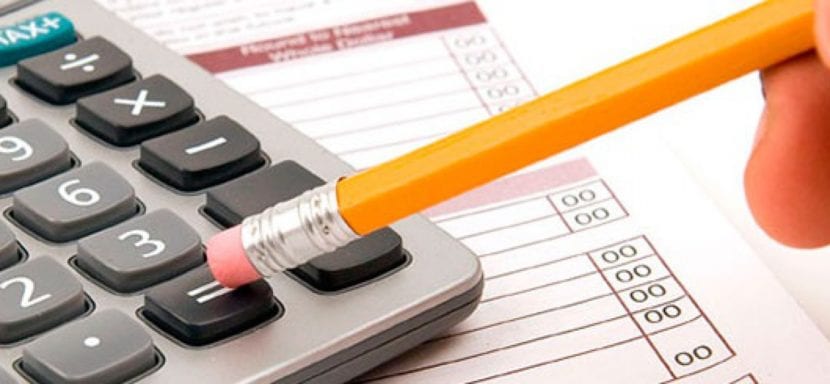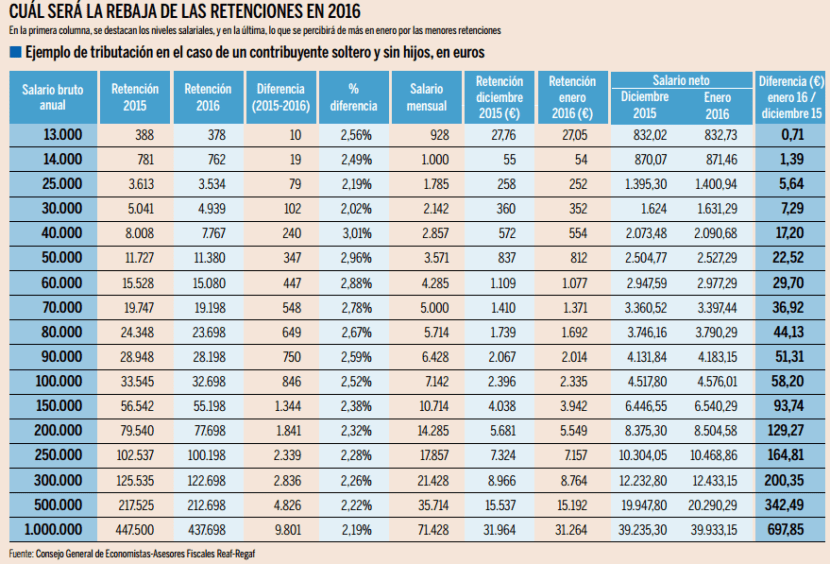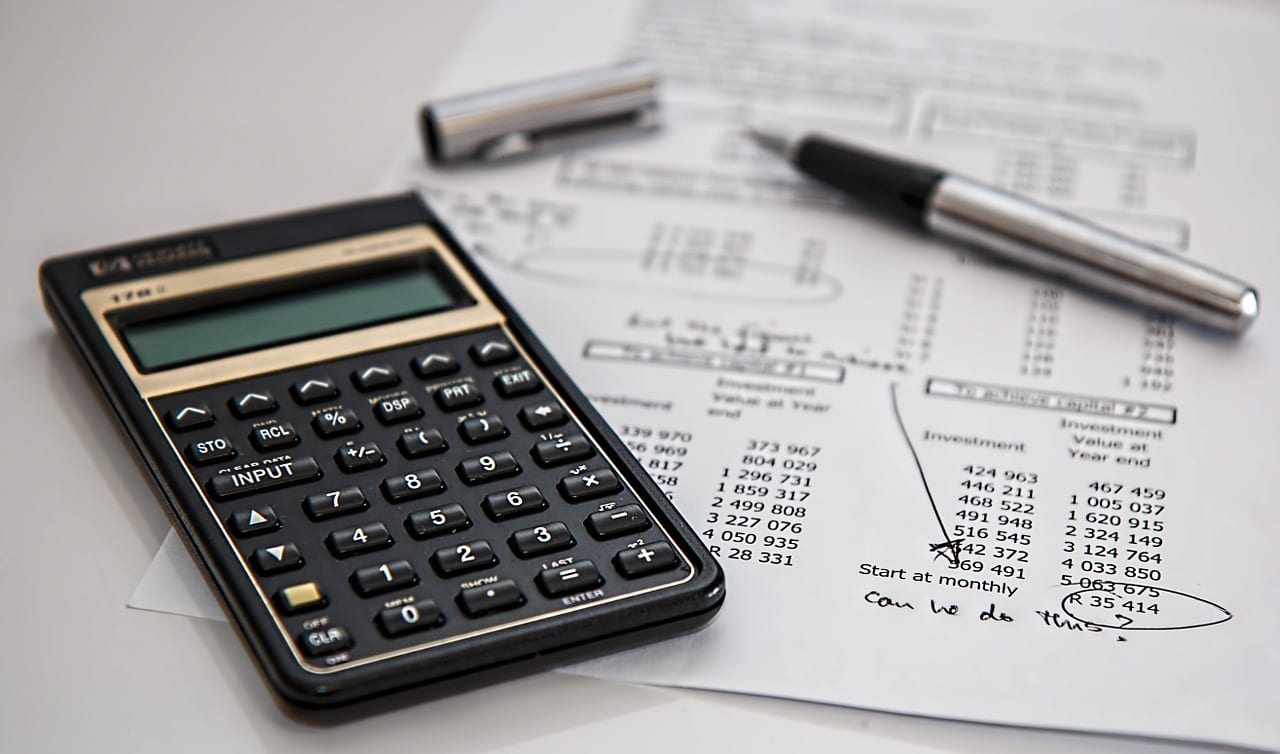
Do you know what personal income tax is? We all, to a greater or lesser degree, know that it is a tax, that it is applied to individuals, and that it is progressive… and we normally associate it with the self-employed.
But Do you know what the sections of income tax are? If you do not know, keep reading, we explain it to you as well as other related concepts that you should know such as the personal income tax tables, who is obliged to pay the Personal Income Tax.
The sections of personal income tax
The income tax tranches consist of an income table, so that, depending on these, those who enter or earn more money, the tax is higher, and for those who pay less, the tax is lower.
The objective of the Income tax tranches is the proportionality of the tax.
The personal income tax, remember, is the Personal Income Tax, and it is paid through withholdings, that is, it is paid in advance on a quarterly basis. At the end of the calendar year, a balance is made between what a self-employed person really should have paid, against what they actually paid, in order to know if the self-employed person should pay more, or the government should return what they paid more.
The withholdings are made through invoices and the Tax Agency is based on them to estimate the possible earnings of the self-employed person.
Income Tax Tables

Before anything else we must establish the famous table of income tax tranches. This table has been subject to a series of numbers at each change of legislature, always using it as an electoral weapon between one government and another.
The last was the advance of the tax reduction approved by the current government in office, in the middle of the current year, causing chaos, especially in smaller SMEs, which do not have an accounting specialist.
This personal income tax table came into force in July 2015, and remains intact for the current course, awaiting possible changes for the course of 2017.
| Base | State percentage | Autonomous percentage | Total |
| Up to 12.450 € | 9,50 | 9,50 | 19 |
| Up to 20.500 € | 12 | 12 | 24 |
| Up to 35.200 € | 15 | 15 | 30 |
| Up to 60.000 € | 18,50 | 18,50 | 37 |
| € 60.000 onwards | 22,50 | 22,50 | 45 |
The table appears on the official website of the Tax Agency with the regional and state details and their possible variants according to each taxpayer.
If there are no changes soon, this is the personal income tax table that you should keep in mind. If you exceed an amount, and go to the next income tax bracket, it may imply an increase of up to 8 percentage points in what you will have to pay to the Treasury each year.
Who pays personal income tax

Well, we already know how much you pay based on your income, but ...who pays personal income tax?
We tend to make a mistake, and it is to think that only people who work on their own account are subject to personal income tax, but it is wrong: it is paid by all natural people, who work on their own or someone else's.
In theory, we must all declare personal income tax.
Article 8 of the Personal Income Tax Law dictates: they are taxpayers of Income Tax, all "Individuals who have their habitual residence in Spanish territory", both "natural persons who had their residence abroad due to some of the circumstances provided for in article 10 of this Law".
So, according to the law, everyone, pensioners, workers, self-employed, anyone who obtains some type of income or profit, must pay taxes for this imposed and, of course, make the income statement every year.
Although it should be clarified that, as we have seen, according to the income obtained, a more or less percentage of the income tax will be paid, and according to some income, they will not even have to pay the tax, due to the positive balance, or because their income is small, such as , for example, a person who is unemployed for the entire current year.
Although yes, there are clarifications.

Who are obliged and exempt to declare personal income tax?
This can be very confusing for you, but there are exceptions to the rule, or rather, conditions, that certain people do not have the obligation to present their personal income tax return.
First, let's talk about the people with income from work, salary, salary or pensions that they have received during the calendar year. Those who do not meet these conditions are not required to declare:
- Have had an income of € 22.000
- Those with an income of € 12.000, from more than one payer, receiving at least € 1.500 from the second.
- Income of € 12.000 in the case of pensioners whose only income is in article 17.2 of the Personal Income Tax Law, by two or more payers.
- € 12.000 income for compensatory pensions
- Income of € 12.000 when the payer is not obliged to withhold either
- Income of € 12.000 when full income from work is received
Although those people may submit your statements, usually it will come out, in the best of cases, to return. If, for example, you are a person who has collected unemployment throughout the year, without having worked at any time, you can file your return, but most likely the result is zero.
In the case of the self-employed, there is no salvation: all the self-employed have the obligation to present their return, even if they have only generated income of € 600. The amount does not matter.
If you have had, as a freelancer, minimum income, and depending on the activity in which you are registered, you must make your due withholdings on the invoices, and the declaration with the personal income tax at 19%, unless your Community has reduced some percentage point in the Autonomous personal income tax section, since each Community can do it in the percentage part that corresponds to it.
IPRF withholdings in 2017

Una personal income tax characteristic, in addition to the proportionality with the income, is that it is paid in advance.
For those who are self-employed, a percentage is subtracted, according to income and branch, in form of income tax payment in advance.
Freelancers must subtract a percentage from each invoice charged based on personal income tax, plus VAT of course.
At the end of the calendar year, the count is closed, and then, the Tax Agency, makes a balance between the real income tax generated against that paid.
If a self-employed person, or worker, pays more personal income tax than his share, the Tax Agency will return it to him, if he has paid less, he will have to pay, as we all know.
When are income tax withholdings entered?
While an employed person has it very easy, because the employer makes the withholding of his personal income tax, The self-employed person has to do all the management on their own, with the advisable and almost obligatory help of an expert in the field, of course.
Generally, the withholding is entered into the Tax Agency on a quarterly basis, through the famous model 111, or 115 if it is for rentals.
If the self-employed person is lucky (good or bad, it depends on each person) to make a payment on account of your personal income tax, you must do so with form 130.
The dates for this year were:
- First quarter: April 20
- Second July 20
- Third quarter: October 20
- Fourth quarter: January 20, 2017
How the IRPF tranches work in 2017

Finally, we leave an issue that generates a lot of confusion, or that people often misinterpret.
We usually think that sections of personal income tax are applied rigidly, fixed, on the total income generated by the self-employed or self-employed.
That is, if a person generates € 30.000 in a year, then he pays 24% of personal income tax on the € 30.000. And it is not that simple. Why doesn't it work like this? It may be difficult to explain, but let's try.
You must bear in mind that personal income tax is like a ladder, the more steps you go up, the more tax you go up.
If we apply a percentage to the final result of the annual income obtained, we would be doubling, and even quadrupling that person's income, increasing the amount to be paid to a huge amount.
The sections work both ways, as income rises, so does the tax rate of personal income tax.
Better let's see an example: Let's suppose that a person has generated income of € 40.000 in the calendar year. Yes, he is a person who does not have financial problems.
How will that person pay income tax?
- Of the first € 12.450, you will pay 19%, that is,
- Up to € 20.200, 24%
- Up to 35.200, 30%
- Up to 40.000, 37%
In other words:
- For the first section (€ 12.450): € 2.365
- For the second section (€ 7.750): € 1.860
- For the third section (€ 15.000): € 4.500
- For the fourth section (€ 4.800): € 1.440
In total, this person generates an income tax of: € 10.165
That is, you pay for the money accumulated in each of the sections of personal income tax throughout the year, and as you go up or climbing the section of personal income tax, you will pay the respective percentage to that section.
Remember that since you pay in advance, you go up the stairs, it is not calculated according to the net or gross accumulated annually, but by quarters.
It is more expensive? Maybe, but that guarantees that a person who generates an income for a tranche, pays only according to that percentage, and if it goes up, for example, by € 100 only, an increase of up to 8 points is not made to all your income generated.
For example: if you have generated € 12.600 income, when the 19% tranche is € 12.450, would you like them to apply the percentage of the second tranche, that is, 24%, and not 19% to all your money? Or only to the money generated in the rent of that section?
We know that you prefer the second, and the Tax Agency as well. That is why the sections of personal income tax work like this: proportionality and progression is the key to income tax tranches.

Why in the example that you give to the salary of 40.000 corresponds to 10.165, but in the table the withholding marks 7.767 to the same salary?
Hi Diego,
The example is a withholding differential between 2015 and 2016. For readers to see the annual variations. And the example is about 2017. It is also an assumption, since what the taxpayer must pay depends on being single, having family responsibilities, contributions, donations, etc ... the 2017 tranches apply to this.
I feel the confusion of the image. All the best
Good evening, thank you very much for the article! There goes my question,
I have been autonomous for a year and a half and I am 25 years old. That is, I pay the reduced fee (currently 187) and I make a 7% withholding of personal income tax on my invoices. Does that withholding depend on the income you have? The personal income tax tables with the limits of 12.450, 20.200, 30.200 ... affect me at all? In the income statement I will pay according to income, but always the same percentage? I had those questions for a long time, but today a friend asked me if he could make an invoice in my name since it is a specific thing, and of course, now I do not know if I increase my income, it will affect the percentage that I will pay to hacienda or not… .I'm a little lost…
Thanks a lot!!
I advise you not to invoice anyone, the 7% retention applies the first 3 years after signing up, then increases to the normal retention of 15%.
Good afternoon Susana Maria.
The first thing to thank you for your explanations and the second thing is to point out (if I am not mistaken) that in the explanation about the person who declares an income of € 40.000,00 / year in the fourth tranche, the amount generated from personal income tax is not the one indicated by ti (1.440), if not 1.776, since the excess would go from 35.200 to 40.000 at 37%, right?
Thanks for getting me out of the doubt.
All the best
Hello Igor, Thank you.
You are right the excesses of the sections, they are taxed in the next step. Greetings Susana
Hello, good afternoon, my query is the following, I am a pensioner for a widow for almost 30 years I collect an industry pension and I never received or believed that I was entitled to IRPF. I even worked, I was from 2015 until March 2017 as a personal assistant and companions in 2 companies. Where to know if I have something to collect when it is paid in 2017
I have been a self-employed for a year, it is the first time that I make the rent and collect in 2016, € 3000 in aid, subsidy for the first self-employed, I can't stop reading, that will pay me, but how much? I don't know how to calculate it.
Good morning, so far I work full-time (40h) per week and with an annual gross salary of € 25.000 and an annual variable of 10%.
I am thinking of reducing my day for childcare to 35h per week, which according to I have calculated my gross annual salary would be € 21.875.
I currently have a withholding of 11.44% (I have 2 children and a mortgage).
I would like to know more or less how much my IRFP would be? whether it would be reduced or maintained.
Thanks! a greeting.
Hey.
Since May 24, 2017 I have been retired, in addition to being a widower since 86, so I collect on the one hand the widow's pension and on the other hand the retirement pension.
6,36% of personal income tax is applied to both one pension and the other.
My question is this.
As retired that I am, it is correct that I get many amounts, my retirement is 739 and my widow's pension is 314.
Regards thank you very much
I have worked for a company and they have just charged me 720 euros, the income tax is correct?
The data seem incongruous to me. The person who earns € 40000 gets an income tax of more than € 10000, that is, an average rate of more than 25%. However, if you go to the first table of the article, the average type of personal income tax for a person who earns € 40000 is approximately 20,5%.
Which one should you pay attention to?
Hi, thanks for the article. My concern is the following: this year I have only worked on a research project with an income of 600 euros per month, for two months. Total 1200 euros. I did not sign a contract and now I must invoice. Should I register with IAE? Can I simply pass an invoice with the 15% income tax discount? Am I obliged to declare?
Thank you,